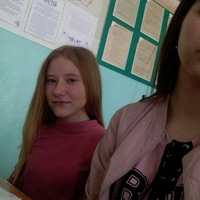
какова роль изобразительных средств в русском языке
 0
0
 0
0
Ответы на вопрос
 Внимание! Ответы на вопросы дают живые люди. Они могут содержать ошибочную информацию, заблуждения, а также ответы могут быть сгенерированы нейросетями. Будьте внимательны. Если вы уверены, что ответ неверный, нажмите кнопку "Пожаловаться" под ответом.
Внимание! Ответы на вопросы дают живые люди. Они могут содержать ошибочную информацию, заблуждения, а также ответы могут быть сгенерированы нейросетями. Будьте внимательны. Если вы уверены, что ответ неверный, нажмите кнопку "Пожаловаться" под ответом.

акварель - (фр. Aquarelle — водянистая; итал. acquarello) — живописная техника, использующая специальные акварельные краски
абрис - (нем. Abriß — чертёж): Абрис — чертёж) — контур, набросок, очертание предмета, линия, показывающая форму какого-то объекта
ПЕЙЗАЖ (франц . paysage, от pays местность), вид, изображение какой-либо местности;
натюрмо́ртИз франц. nature morte термин, используемый в живописи и означающий «изображение группы предметов, таких как цветы, фрукты, рыба и тому подобное».
портрет франц. portrait,
и так далее.
 0
0
 0
0

The Role of Visual Elements in the Russian Language
Visual elements, such as punctuation marks, capitalization, and typography, play an important role in the Russian language. They contribute to the overall meaning, clarity, and expression of written texts. Let's explore some key aspects of the role of visual elements in the Russian language:
1. Punctuation Marks: Punctuation marks in Russian serve various purposes, including indicating pauses, separating clauses, and clarifying the meaning of a sentence. Some commonly used punctuation marks in Russian include:
- Comma (,): The comma is used to separate words, phrases, or clauses within a sentence. It helps to clarify the structure and meaning of the sentence. - Period (.) and Ellipsis (...): The period is used to mark the end of a sentence, while the ellipsis is used to indicate an omission or a pause in speech. - Question Mark (?): The question mark is used at the end of a sentence to indicate a direct question. - Exclamation Mark (!): The exclamation mark is used to express strong emotions or emphasis. - Quotation Marks (" "): Quotation marks are used to enclose direct speech or quotations. - Colon (:), Semicolon (;), and Dash (-): These punctuation marks are used to indicate a pause, introduce a list or explanation, or create a stronger separation between sentence elements.
.
2. Capitalization: Capitalization in Russian follows specific rules and conventions. The first letter of a sentence, proper nouns (names of people, places, organizations), and the pronoun "I" are capitalized. Capitalization helps to distinguish between different parts of speech and provides clarity in written texts.
3. Typography: Typography refers to the visual appearance and arrangement of text. In Russian, typography can convey meaning and enhance the overall aesthetic appeal of written materials. Some aspects of typography in Russian include:
- Font Styles: Different font styles can be used to convey emphasis or highlight specific words or phrases. - Font Size: Varying font sizes can be used to indicate headings, subheadings, or emphasize certain parts of the text. - Font Color: The use of different font colors can help differentiate between different types of information or highlight important points.
Visual elements in the Russian language are essential for effective communication and understanding. They provide structure, clarity, and emphasis to written texts, allowing readers to interpret and comprehend the intended meaning more easily.
 0
0
 0
0
Топ вопросов за вчера в категории Русский язык
Последние заданные вопросы в категории Русский язык






-
Математика
-
Литература
-
Алгебра
-
Русский язык
-
Геометрия
-
Английский язык
-
Химия
-
Физика
-
Биология
-
Другие предметы
-
История
-
Обществознание
-
Окружающий мир
-
География
-
Українська мова
-
Информатика
-
Українська література
-
Қазақ тiлi
-
Экономика
-
Музыка
-
Право
-
Беларуская мова
-
Французский язык
-
Немецкий язык
-
МХК
-
ОБЖ
-
Психология
-
Физкультура и спорт
-
Астрономия
-
Кыргыз тили
-
Оʻzbek tili













